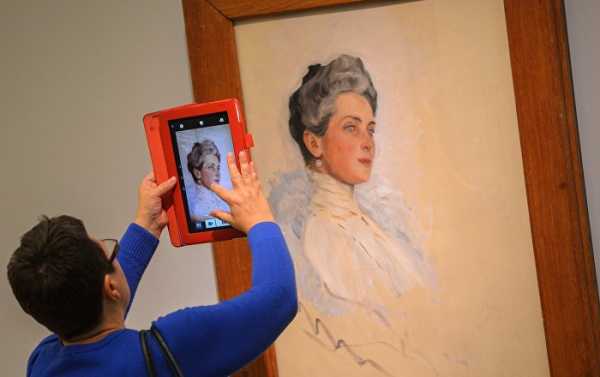
Scientists from Moscow State University of Psychology and Education have conducted an experiment to evaluate the perception of a person’s psychological profile, depending on painted portraits and photos with their images.
The study’s results show that a person’s psychology traits can be seen more clearly from a painted portrait, rather than a photo of the person.
Psychologists also believe that independent observers reconstructing the personality of an individual using a photo or a painted portrait of the person, mostly do this on the basis of the subject’s alleged social role, rather than the above imaging methods.
They study various issues regarding the evaluation of people’s individual personality traits based on facial expression. However, the role played by various techniques for presenting behavioral information on individuals, including the study of a person’s face from a video or photo image or a painting, remains an insufficiently studied area.
According to the researchers, most studies on the perception of emotional conditions and individual psychological human traits involve the use of standardized photos of human faces. At the same time, few studies have been conducted using painted portraits, although their use makes it possible to conduct a psychological analysis of the person depicted on them, as well as spectators.
The university’s scientists conducted a two-stage experimental study, comparing evaluations of individual psychological human traits of people depicted on painted portraits and photos. During the first stage, the participants described the most probable traits of the persons involved the way they saw them. During the second stage, they determined fundamental values that, in their opinion, are typical of persons posing for portraits and photos and whose successive images were displayed at random on an LC monitor.
“Key provisions of the cognitive-communicative approach, developed by Soviet psychologist Boris Lomov, served as the methodological foundation of our study. It hinges on a postulate noting the inseparable link between cognition and communication: the perception of another person is systematic and has the status of a cognitive-communicative event,” said Professor Vladimir Barabanshchikov, the director of the university’s Center of Experimental Psychology.
Participants were shown 20 images, including ten photos and ten painted portraits of famous Russian personalities from the late 19th and early 20th centuries, such as singer Feodor Chaliapin, poet Alexander Blok and Dowager Empress Maria Feodorovna. Painted portraits and photos show members of the Russian Royal Family, public activists and artists in approximately the same age category.
Video copies of portraits and photos were processed using special methods in advance. Photoshop was used to remove details of interiors and backgrounds. Full-face images alone lacking jewelry or other details were used.
The Free Description and Range of Values methods, developed by psychologist Dmitry Leontyev, were used to evaluate the subjects, through an analysis of diaries and letters.
Scientists found that descriptions of various images of the same person were similar to the subject’s personal traits. While describing the portraits, the participants used a richer vocabulary; and they listed more individual psychological traits than they did after seeing the photos. It took them more time to describe an individual’s personality with the paintings, and the descriptions conformed most closely to those made by contemporaries of a subject in the portrait. At the same time, the psychologists found no substantial differences in the number of values being derived from the paintings or the photos.
“Independent observers reconstructing the personality of an individual mostly use the subject’s social role,” Barabanshchikov noted.
Scientists reached the preliminary conclusion that painted portraits act as a certain countdown point in the context of various personality-presentation methods. Painted portraits express a combination of traits adequately reflecting a person’s inner world outlook. The significance of facial photos as a subject and means of a psychological study hinges on its similarity to the painted portrait. Or the photo will unlock hidden and not necessarily obvious traits of a given personality.
While noting that this pilot data is only at the beginning of the research cycle, scientists said the results might eventually prove useful in various practical areas where accurate inter-personal perception plays an important role, including the work of customs officers, criminalists, cosmetologists, etc.
The study’s results are published in the journal Experimental Psychology.
Sourse: sputniknews.com






